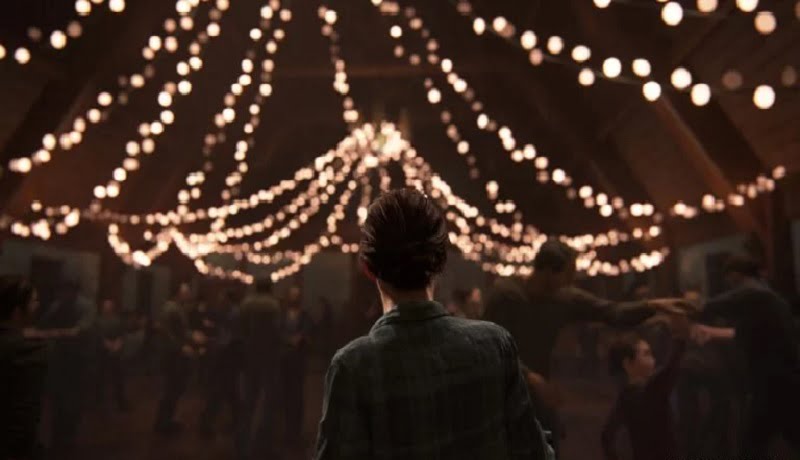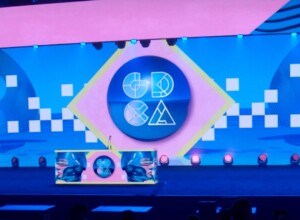The most recent trailer for The Last of Us Part II begins with a civilised response to the end of the world: a barn dance.
It’s got a Southern ball feel to it. Hulking wooden rafters pearled with fairy lights, couples dancing like fairground teacups – all softly blurred as the camera pans down, focussing on Ellie. What a vision of a debutante: shabby plaid shirt, grubby complexion, a tattoo sleeve, and something brown in her glass. Things become less civil.
The violence on display in the trailers for The Last of Us Part II has been the topic of debate – whether or not it’s being exploited to sell the game, whether it’s being fetishised. Certainly the depravity that’s here is piercing. Naughty Dog’s engine is free of the uncanny clank that sometimes hinders mo-cap; as such, the crunching shudder and snap of tactile killing contains the clammy rigor of reality, searing itself on the optic nerves. But it isn’t just the graphic imagery that transfixes. There’s something more deeply corrupting about it.
The first violence we see is done by those hooded zealots, and carried out with the solemnity of a rite. It’s the sort of bloodshed Cormack McCarthy describes in Blood Meridian, where he wrote, “War is the truest form of divination.” These cultish figures go about their work together, buoyed by belief free of morality. What truly harrows are the framing and apparatus: the discarded bucket used as a stool for a hanging, the ritualistic spilling of the intestines, the streetlamp repurposed as gallows against a predawn sky. These hellish visions signal the recrudescence of old ways – of dark ways – in the face of hopelessness, desperation expressed with brutality. What is it they believe? Is there a religious shade to their actions? Why do they murder in the way they do?
Ellie’s violence is of another sort. It’s borne of self-defence, but what holds us rapt – what disturbs us – is the gnashing depravity of it: the ripping of the larynx, the cracking of claw hammer against cheekbone, the point blank entry of a bullet below the eye. What is demanded by necessity soon feels atavistic, as she stalks the undergrowth as if sniffing spoors of blood. Being an E3 trailer, the entire thing feels choreographic. A bullet grazes Ellie’s shoulder, just so, scoring a perfectly-ruled line of red. A balance is struck between body shots, head shots, arrows, bullets, bottles and melee blows – behold the panoply of death! Her lightsome movement gives her the poise of a panther. In these moments, she exists in a realm outside morality.
“I think they should be terrified of you,” rings the trailer’s resounding line. Perhaps we should be. But then, in a jump cut’s time, we are back in the barn: a dance, a smile, a kiss, the warmth of bodies, the pressure of peer groups – human things, things we know. These two scenes are smashed together but can they be reconciled? Can one world exist within the other? If the game’s dialogue is where our story is told, then its play is host to its theme: which parts are the last of us to go?
We know little of The Last of Us Part II: who are this cult? Where are the infected? What group is Ellie with, and what’s their lot in life? Where is Joel? It’s testament to the magnetism and mystery of the world Naughty Dog has wrought that these stories and characters almost seem to exist on a different plane to the moments of barbarity. But they don’t. This isn’t violence qua violence; it isn’t gratuitous. This is violence that speaks, and we would be foolish not to listen.






